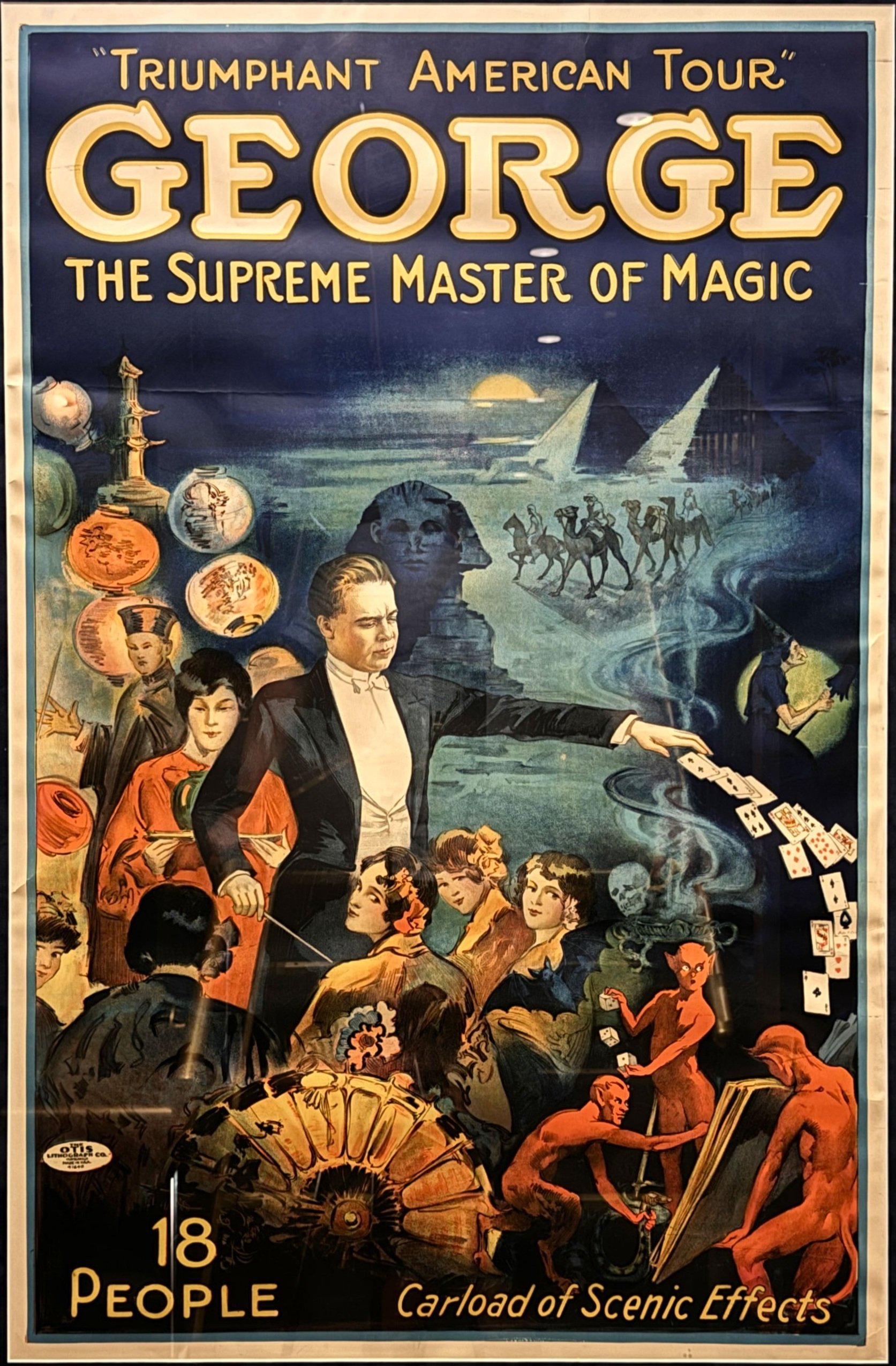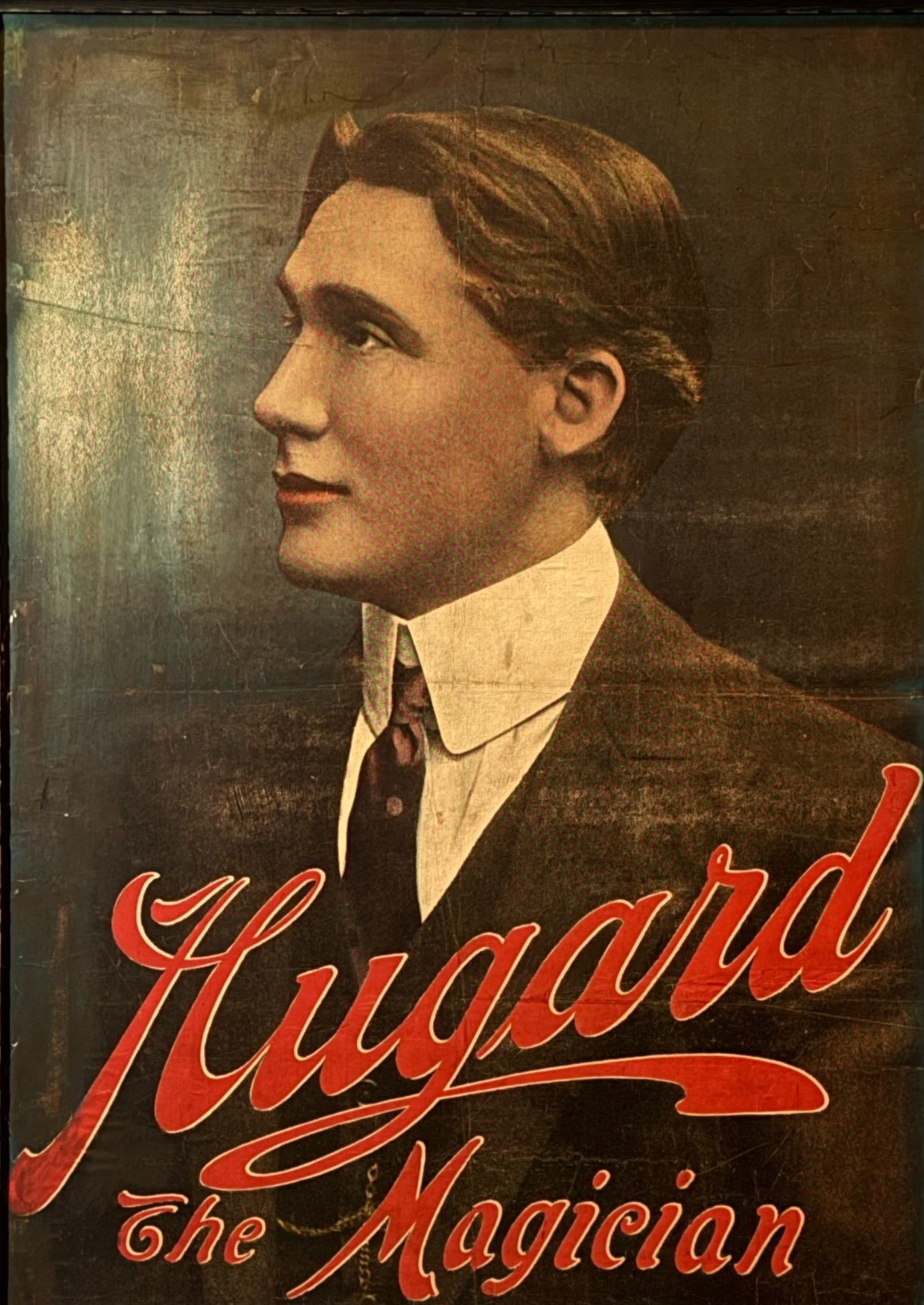
MAgician in Exile
By William Pack | Magician, Historian, and Educator, https://libraryprogramming.com/
Otis Lithograph Co. George, The Supreme Master of Magic , c 1926. [Cleveland, O.: Otis Lithograph Co., approximatelyGrover George
B. August 18, 1887 – D. September 14, 1958
Grover George, born on August 18, 1887, in Zanesville, Ohio, was a renowned magician who left an indelible mark on the world of magic. His journey into the world of magic began at a young age when he performed his first magic show at the Old South Zanesville School. This early start ignited a passion that would define his life.
In the early 1900s, George married Ruth Cornell, and they had their first child, Mildred, in 1910. Despite the challenges of balancing family life and a burgeoning career, he continued to perform in small-town venues, honing his craft and building his reputation.
The early 1920s marked a significant turning point in George's career. He decided to elevate his act and purchased the equipment and rights to William "Doc" Nixon's "Hong Kong Mysteries," forming the Mysteries Production Company. This move allowed him to perform in increasingly larger, first-class theaters. His show received positive reviews, with critics praising his cleverness and beautiful, costly settings.
Soon, he found himself in direct competition with Howard Thurston, the most prominent magician in the United States at that time. Thurston, fearing the competition George presented, reportedly pressured theaters not to book him. He told them that if they took on George, then he would not perform in their theatres. This led to significant financial difficulties and legal battles for him.
With these setbacks, George decided to take his spectacular illusion show abroad. In 1924, he embarked on a tour of South and Central America, beginning in Cuba. He eventually appeared in every major city on the southern continent. This decision proved to be a wise one. He played to capacity crowds everywhere he performed. His audiences included settlers in remote villages on the Amazon to General Juan Gomez, then president of Venezuela.
In 1929, George returned to the United States, hoping to reestablish his presence with a “Triumphant American Tour.” However, Thurston continued his attacks, forcing George out of major theaters and into second-rate theaters, tent shows, and worse.
Eventually, George gave up and decided to return to South America. He left behind thousands of his American tour posters. Those posters were forgotten in a Wisconsin barn until the 1980s when thousands of prints were sold at auction. Those lavish posters, depicting the grandeur of his show, remain iconic in the world of magic.
However, Thurston continued his attacks,
forcing George out of major theaters
and into second-rate theaters, tent shows, and worse.
George eventually settled in São Paulo, Brazil, where he transitioned from performing to running successful businesses. Despite stepping away from the stage, he continued to contribute to the entertainment world through his innovative work in projection technology until his death. He manufactured projection machines for theaters and became an important force in the creation of the early Brazilian television industry.


